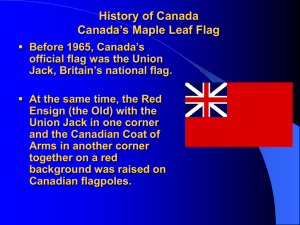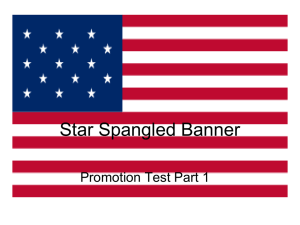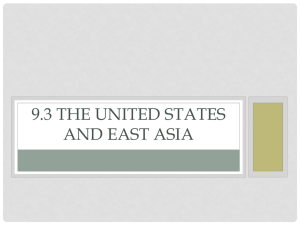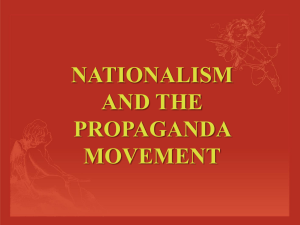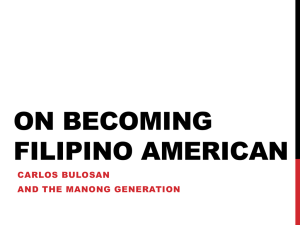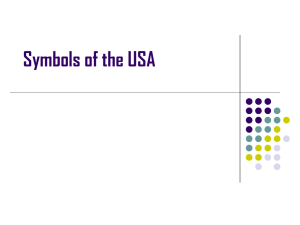The Filipino Flags and Colonialism: 1890`s
advertisement
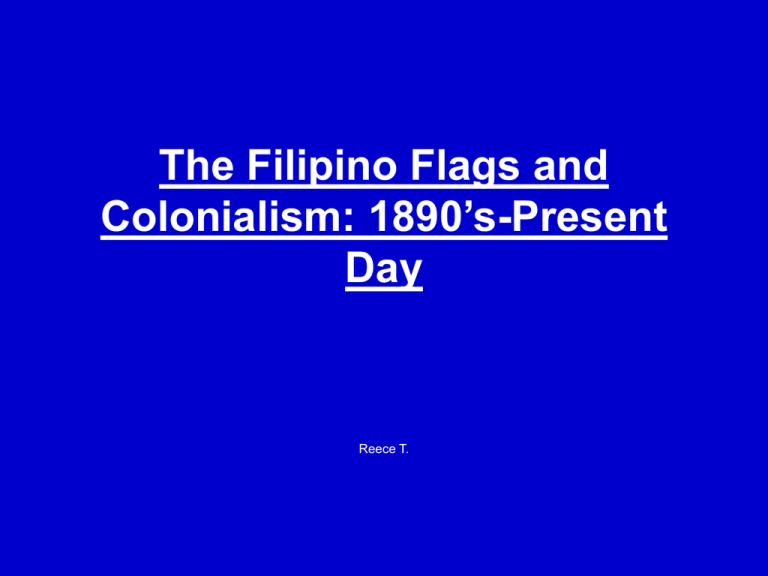
The Filipino Flags and Colonialism: 1890’s-Present Day Reece T. Flags Flags are used as a symbol to represent the beliefs, values, and history of a nation. They can represent a country’s identity and unite a group of people during times of despair. As these things change, so will a flag and its symbolic meaning. The flags raised in the Philippines have followed this pattern since the Philippine Revolution in 1896 and continued to change until February 12, 1998 when Republic Act 8491 was approved, establishing the specifications of the flag of the Philippines as we know it today. The Flags of the Philippine Revolution: • The first flag of the Katipunan was a red rectangular flag with three K’s lined up horizontally. The red field in which the K’s laid represented blood, as the members had signed their member ship with their own blood Other Variations of The Katipunan Flag • • The red flag with the K’s organized in a triangle represent the three branches of the Kapitunan. It is said they are organized in a n isosceles triangle to represent the equality of importance amongst the three branches (Katipon, Kawal, Bayani) when fighting the revolution. Various leaders of the Katipunan also displayed their own flags in battle. Katipunan Flag 1897 • The red flag displaying a sun with a face, also known as the sun of liberty, was adopted by the Katipunan in 1897 in order to unite the people under one symbol. They replaced the K’s with the sun of liberty, which had eight rays representing the first 8 provinces that revolted against the Spanish and were put under martial law. They were Manila, Cavite, Bulacan, Pampanga, Nueva Ecija, Tarlac, Laguna, and Batangas. Flags Risen After the Revolution • Following the Philippine Revolution with Spain multiple variations of the current Philippine flag were raised along with the flags of the U.S and Spain during their occupation of the Philippines. Flag of the Philippines 1898 • The current design of the Philippine flag was conceptualized by President Emilio Aguinaldo during his exile in Hong Kong in 1897. The flag was formally unfurled during the proclomation of independence on June 12, 1898 in Kawit, Cavite. The white triangle stands for equality and fraternity; the blue field for peace, truth, and justice; and the red field for patriotism and valor The eight primary rays of the sun represent the eight provinces which declared a state of war as soon as the first revolt was initiated in the 1896 Revolution of independence from Spain, and placed under martial law by the colonial government, which was borrowed from the Katipunan flag of 1897 Something to think about!! • • Some say Aguinaldo designed the Flag of the Philippines in honor of Cuba since the Philippine Revolution followed in the steps of Cuba and their war with Spain for their independence. The flag of Cuba was adopted on May 20, 1902. It contains a field with three blue stripes and two white stripes, and a red equilateral triangle at the hoist with a white 5-pointed star. The flag of Cuba was designed in 1848 for the liberation movement, which sought independence from Spain. The flag was briefly hoisted in 1850 at Cardenas but was not officially adopted until 1902, when independence was granted by the United States U.S and the Philippines: Flag during war time • The Flag of the Philippines is unique in the sense that it can indicate a state of war when the red field is displayed on top, or on the observer's left when the flag is displayed vertically • Hostilities broke out between the Philippines and the United States in 1899. The flag was first flown with the red field up on February 4, 1899 to show that a state of war existed. Aguinaldo was captured by the Americans two years later, and swore allegiance to the United States American Flag Risen • With the defeat of the Philippine Republic, the Philippines was placed under American colonial rule and the display of the Philippine flag was declared illegal by the Sedition Act of 1907. From 19071919, three different United States Flags would be raised. Navy Blue Philippine Flag • The Sedition Act of 1907 was repealed on October 30, 1919. With the legalization of the Philippine flag, the cloth available in most stores was the red and blue of the flag of the United States, so the flag from 1919 onwards adopted the navy blue color. The Philippine Legislature passed Act. No 2928 on March 26, 1920, which legally adopted the Philippine flag as the official flag of the Philippine Islands. October 30 was declared Flag Day in the Philippines. Japan in the Philippines • The Filipino flag was banned again when the Japanese invaded and occupied the Philippines beginning December 1941. The Japanese flag was hoisted with the establishment of the Japanesesponsored Second Republic of the Philippines Filipino Flag with Cuban sky blue • In October 1943, Emilio Aguinaldo hoisted the flag with the original Cuban blue and red colors restored. The flag was originally hung with the blue stripe on top until the President proclaimed that the Philippines was in a state of war in 1944 People Power • When the Philippines finally won its independence in 1945, the original flag designed by Aguinaldo was flown with the navy blue stripe similar to the blue of the United States flag. But in 1985, President Ferdinand Marcos ordered the colors of the flag of the Philippines be restored to the original blue and red of the Cuban flag. The Act was soon reversed after the People Power Revolution removed Marcos from power. The Flag Today • Because of the controversy of the shade of blue displayed on the Flag of the Philippines, the 1998 centennial of the proclamation of Philippine independence, the Flag and Heraldic Code of the Philippines (RA 8491) was passed, changing the shade of blue to royal blue. This is the flag the Philippines flies today. • NOTE: In 2009, a senate bill was introduced to add an additional ray to represent the Moro. As of September 24, 2009, it is in the process of bill reconciliation in Congress.

